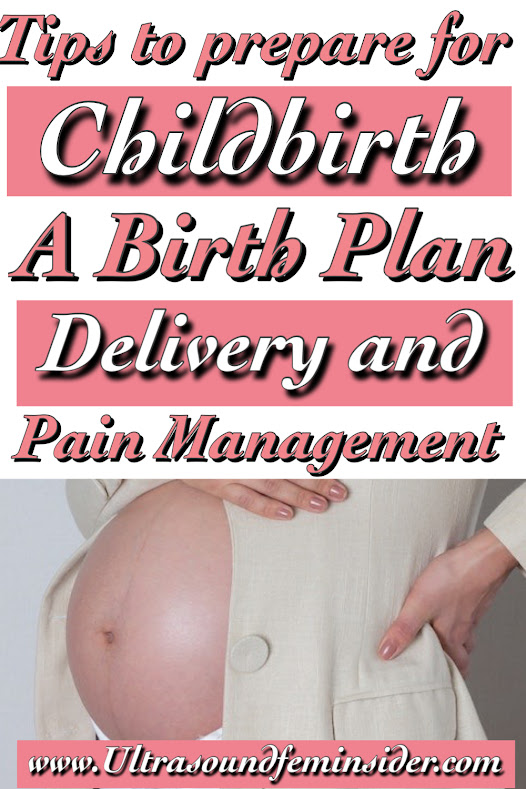Preparing for childbirth is an important part of pregnancy. As an expectant mother, you may be wondering what your options are for delivery methods, pain management, and creating a birth plan. In this blog post, we will explore these topics to help you prepare for childbirth: birth plans, delivery methods, and pain management.
Preparing for childbirth: A birth plan, delivery methods, and pain management.
Birth Plans
A birth plan is a document that outlines your preferences and expectations for labor and delivery. It can include everything from who you want in the room with you, to your preferred delivery method, to your pain management preferences. A birth plan can help you communicate your desires to your healthcare provider and ensure that everyone is on the same page. Here are some things to consider when creating a birth plan:
- Delivery Method: There are two main delivery methods – vaginal delivery and cesarean section (C-section). If you have a preference for one method over the other, be sure to discuss this with your healthcare provider.
- Pain Management: There are a variety of pain management options available during labor and delivery, including epidurals, nitrous oxide, and IV medications. Research your options and include your preferences in your birth plan.
- Support People: Decide who you want in the room with you during labor and delivery. This could include your partner, a doula, or a close friend or family member.
- Medical Interventions: If you have any strong feelings about medical interventions like induction, fetal monitoring, or episiotomy, include these in your birth plan.
A Birth Plan Should Include all of the Following Information:
Basic information:
- Name: ______________
- My support person’s name: ______________
- Hospital/birthing center: ______________
- Due date/induction date: ______________
- Practitioner’s name: ______________
Before labor:
- My health factors include: ______________
- My planned delivery is: ______________
- My birth team includes: ______________
What Happens During labor:
If medically possible, I would like to (circle all that apply):
- Eat and drink during labor if my practitioner allows it.
- Be out of bed (walking around or sitting up) during labor.
- Labor in water.
- Play music, dim lighting, use incense, scented candles.
- Have partner take photos or videos.
- Labor with an exercise ball, in-room shower or birthing tub.
- Use specific birthing positions.
- Other:______________
Medical interventions:
I would prefer (circle all that apply, or make a note next to any you’d like to avoid):
- Artificial rupture of the membranes.
- Leave membranes intact for as long as possible.
- External and internal electronic fetal monitoring.
- Intermittent fetal monitoring.
- Doppler fetal monitoring only.
- The use of an IV or catheter or enema.
- The use of oxytocin to induce or augment labor contractions.
- Episiotomy.
- Natural tearing only.
- Vacuum extraction or forceps to assist in the birth.
- Other:______________
Pain relief:
I would prefer (circle all that apply, or make a note next to any you’d like to avoid):
- Epidural
- Acupuncture
- Acupressure
- Breathing exercises
- Massage
- Meditation
- Reflexology
- Other:______________
Delivery:
I would like to (circle all that apply):
- Use mirror to see baby crown.
- Have partner help catch baby.
- Allow partner to suction.
- Allow partner to cut umbilical cord.
In case of a C-section:
If medically possible, I would prefer (circle all that apply, or make a note next to any you’d like to avoid):
- To be conscious.
- Clear drapes be set up so I can watch as my baby emerges.
- One arm to be left free of cuffs, monitors and IVs so I can hold the baby.
- To breastfeed as soon as possible.
Newborn care:
I would like to (circle all that apply, or make a note next to any you’d like to avoid):
- Hold the baby immediately after birth, allow baby time to creep from belly to breast.
- Breastfeed immediately.
- Have a lactation consultant help me breastfeed.
- Bank the cord blood.
- Donate the cord blood.
- Keep the placenta to take home.
- Give my baby formula.
- Give my baby breast milk only.
- Offer my baby a pacifier.
- Room-in with baby.
- Let my baby sleep in the nursery.
- Have circumcision performed if baby is a boy.
- Give my baby vitamin K.
- Give my baby antibiotic eye treatment.
- Other:______________
Share this article.
Delivery Methods
Vaginal Delivery: A vaginal delivery is the most common delivery method. During a vaginal delivery, the baby is delivered through the birth canal. This method is preferred by many women because it is generally less invasive and involves a shorter recovery time. However, vaginal deliveries can be unpredictable, and there is a risk of tearing or episiotomy.
C-Section: A cesarean section (C-section) is a surgical delivery in which the baby is delivered through an incision in the abdomen. C-sections are typically performed if there are complications during pregnancy or delivery, such as a breech position or a previous C-section. While C-sections are generally safe, they are more invasive and involve a longer recovery time.
Pain Management
Epidural: An epidural is a type of pain relief that involves the injection of medication into the epidural space of the spine. This method can provide effective pain relief without affecting the baby, but it does require the placement of a catheter and can lead to longer labor times.
Nitrous Oxide: Nitrous oxide, also known as laughing gas, is a form of pain relief that is inhaled through a mask. This method can provide mild to moderate pain relief, but it can also cause dizziness or nausea.
IV Medications: IV medications like fentanyl or morphine can be used to provide pain relief during labor and delivery. These medications can be effective, but they can also cause drowsiness or respiratory depression in both the mother and baby.
Other articles you might like to read:
Pelvic pain in women. Role of ultrasound diagnosing pelvic pain.
Tips for a healthy pregnancy. Pregnancy guidelines.
Everything About Yeast Infection.
Migraines During Pregnancy. Remedies that Actually Works.
When to Have Sex to Get Pregnant Faster?
Kick Counts During Pregnancy. How to do it and Why is Important.
Routine Prenatal Screening and Tests During Pregnancy.
Final thoughts about Preparing for childbirth: birth plans, delivery methods, and pain management.
In conclusion, preparing for childbirth involves making important decisions about delivery methods, pain management, and creating a birth plan. By discussing these topics with your healthcare provider and doing your research, you can make informed decisions that are right for you and your baby. Remember, childbirth is a personal experience, and what works for one woman may not work for another. Trust your instincts, communicate your preferences, and be open to unexpected changes along the way.
Zadi, xo
Disclaimer: The medical information on this post is for educational and entertainment use only. Under no circumstances, this information is to replace your doctor’s advice or to treat any disease. For proper care, always visit your doctor.










